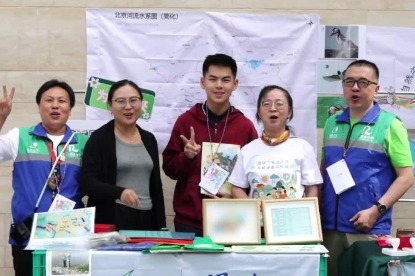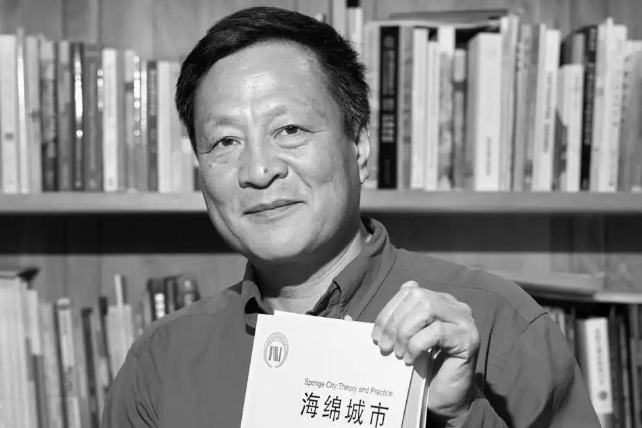New guideline targets tomb raiders


Regulations put forth to curb thefts of cultural relics
Last year, the National Cultural Heritage Administration announced that the Jiangcun Grand Tomb in Xi'an, Shaanxi province, is the resting place of Emperor Wen, who reigned during the Han Dynasty (206 BC-AD 220).
It came as a surprise because for centuries, ancient literature had led scholars to believe the tomb was in another location about 2 kilometers away.
The finding was the result of an archaeological excavation that started in 2017, a protective measure of last resort that was prompted by frequent tomb raids at the site.
All of those who participated in the raids have been caught and prosecuted.
In recent years, tomb raiders have become more sophisticated. They are equipped with better tools and a better understanding of cultural relics. They also have established clear divisions of labor and have made use of the internet to assist them in their crimes, according to Wang Yunxia, director of the Institute of Cultural Heritage Law affiliated to the Law School of the Renmin University of China.
"To a large extent, it has become more difficult to crack down on these types of crimes," she said.
In response, the Supreme People's Court, the Supreme People's Procuratorate, the Ministry of Public Security and the National Cultural Heritage Administration jointly issued a guideline in September to address the theft of cultural relics.
'Increasingly intelligent'
According to Wang, tomb raiders tend to go online to search for information related to ancient burial sites, look for accomplices, make plans and discuss details of their crimes. The internet can also help when they want to evaluate and sell the stolen goods.
"It means crime related to cultural relics is becoming increasingly intelligent with the use of the internet," she said.
Moreover, some relics located in remote villages, especially pieces of ancient architecture, have become important objects for criminals, who see them as easy to pilfer.
"Many young and middle-aged people living in old villages have migrated to cities for work, leaving children and seniors at home. They cannot stop such crimes," Wang said. "The rampant crimes require us to clarify standards for the conviction of such criminals."
The newly issued guideline offers more detailed regulations on how to determine illegal excavations, on the theft and disposal of stolen goods, on identifying cultural relics and on who has jurisdiction over each case.
"It provides clear guidance for law-enforcement departments to deal with the cases," Wang said of the document.
Highlighted in the document are regulations on how to determine whether people involved in the sale of the relics are aware that the items were stolen.
"It used to be a sore point in cases," Wang said. "Judging whether someone has such an awareness is key in measuring guilt, but it's very hard to identify a person's knowledge.
"The guideline makes it clear that any judgments made should consider factors such as a person's cognitive ability, criminal background, benefits gained, behavior during investigation, and the appearance and price of the cultural relics involved."
According to information revealed during the news conference, of the 3,058 criminal cases related to cultural relic thefts dealt with by the courts in the first instance between 2017 and last year, more than 80 percent involved illegally excavating ancient cultural sites and tombs.
China has approximately 760,000 immovable cultural heritage sites, and protecting them is a priority.
"The stolen cultural relics may be retrieved, but the damage of immovable sites is irreversible. A great amount of historical and cultural information may disappear with illegal excavation," said Liu Qingzhu, former director of the Institute of Archaeology at the Chinese Academy of Social Sciences.
The guideline also clarifies how to deal with would-be relic thieves.
"Sometimes, when people illegally excavate cultural sites, they are caught before doing any real damage. In those instances, they are often released without punishment," Wang said.
"The latest guideline, however, clarifies that depending on the significance of the sites and the circumstances of the crimes, people may be prosecuted even if they failed to actually steal anything or cause damage. This could serve as a deterrent for potential criminals."
Clarifying roles
The guideline also makes clear the responsibilities of cultural relics authorities in identifying and evaluating the items.
"Judges and procurators may not know much about the value of concrete cultural relics, so they need experts' opinions to reach verdicts," Liu said.
Wang said: "The guideline gives more detailed guidance on how to apply the criminal law and the relevant judicial interpretations related to cultural relics. This helps to avoid the unjust phenomenon of handing down different sentences for the same crime, which is caused by a different understanding of certain provisions.
"It also strengthens the combination of the criminal law and cultural relics protection law, so, to a large extent, it now plays a key role in promoting the protection of cultural heritage in China."
Since 2009, several campaigns to prevent crimes related to cultural relics have been launched by the Ministry of Public Security and the National Cultural Heritage Administration. At first, the campaigns were confined to key areas where such crime was rampant, but it is now a nationwide effort.
During the latest campaign, which kicked off in 2020, public security offices nationwide have solved more than 3,950 cases related to cultural relics, arrested more than 8,420 suspects and retrieved 82,800 items, according to the Ministry of Public Security.
wangru1@chinadaily.com.cn
- China Focus: China's intelligent river governance draws global attention
- Major cultural landmark opens in Xiong'an New Area
- Intl fishing competition attracts 1,200 athletes from 21 countries
- Across China: Climate change in China's arid northwest draws academic, public attention
- China Focus: Chinese scientists propose excess 40Ar in lunar soil possibly from Earth wind
- Chinese team achieves breakthrough in multiple drone flight against challenging winds




































